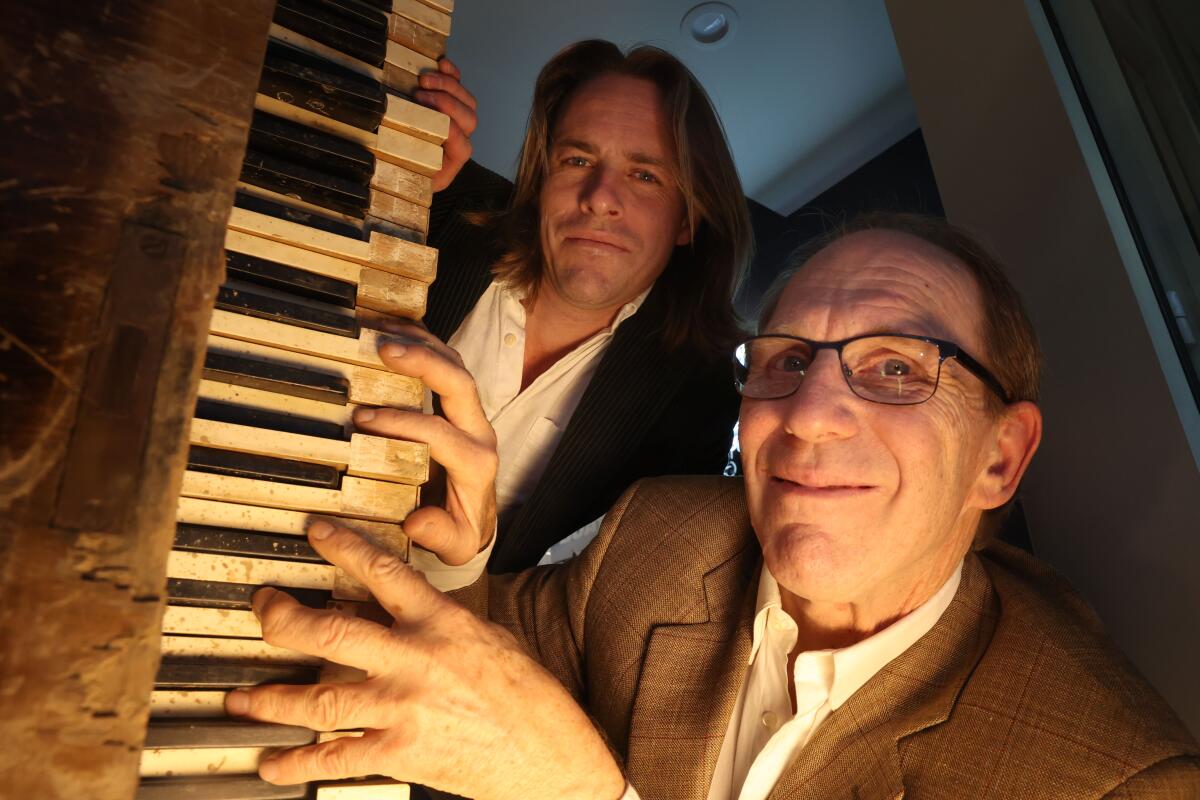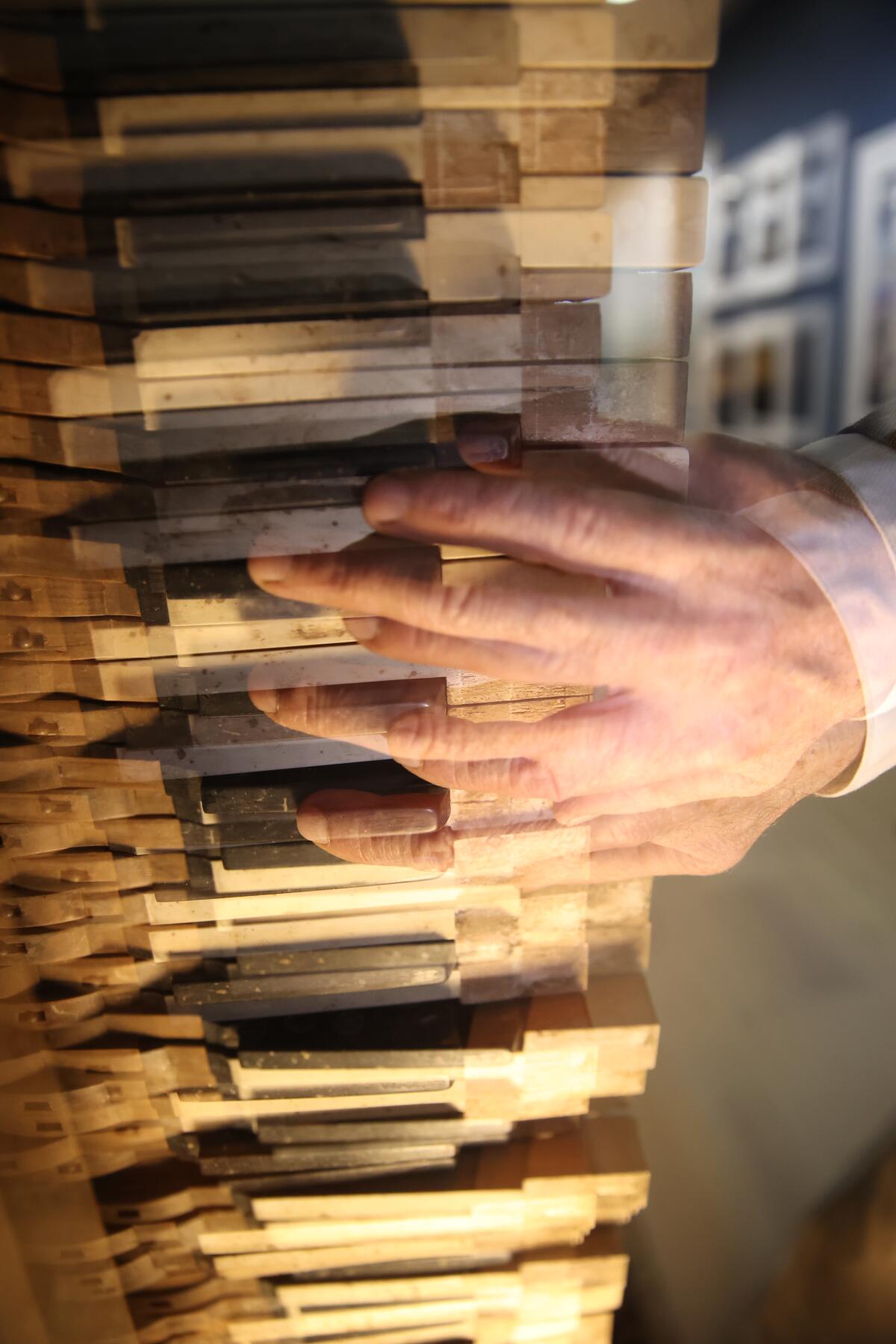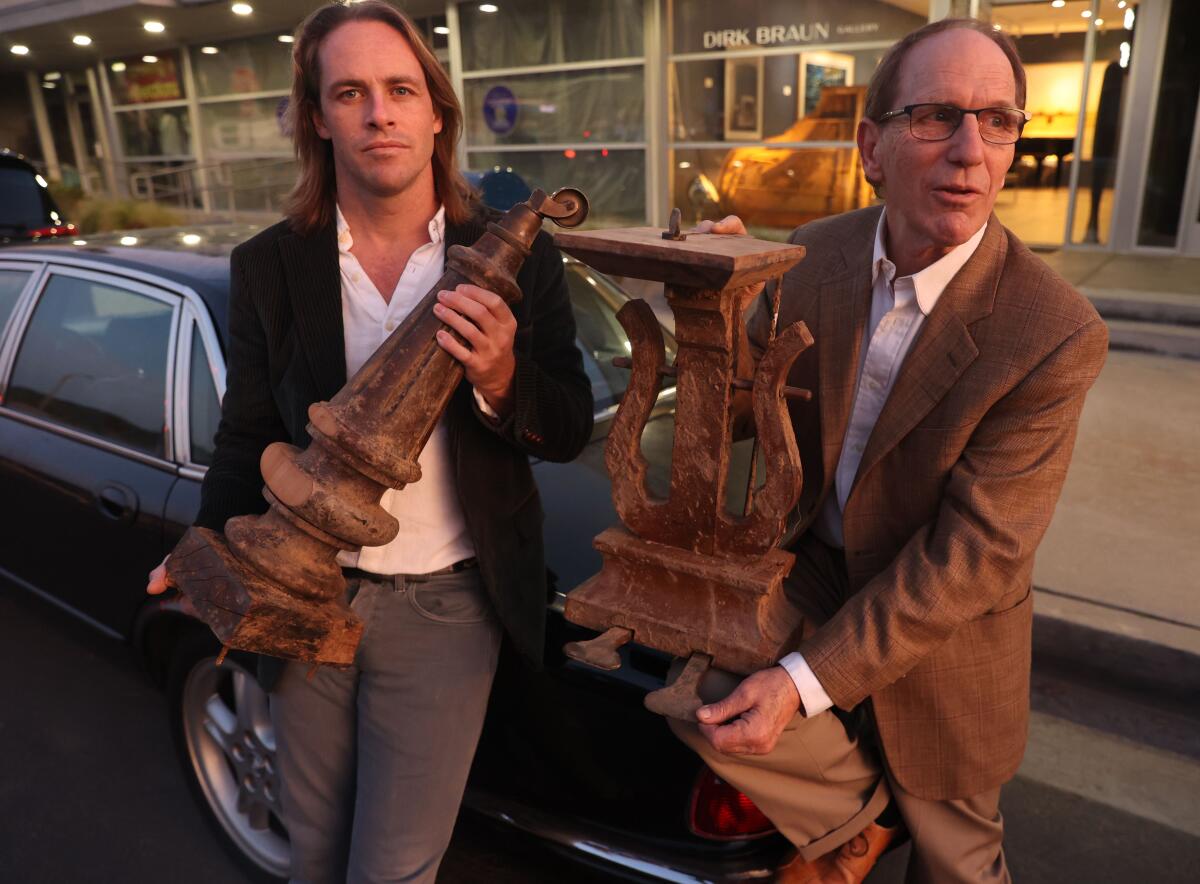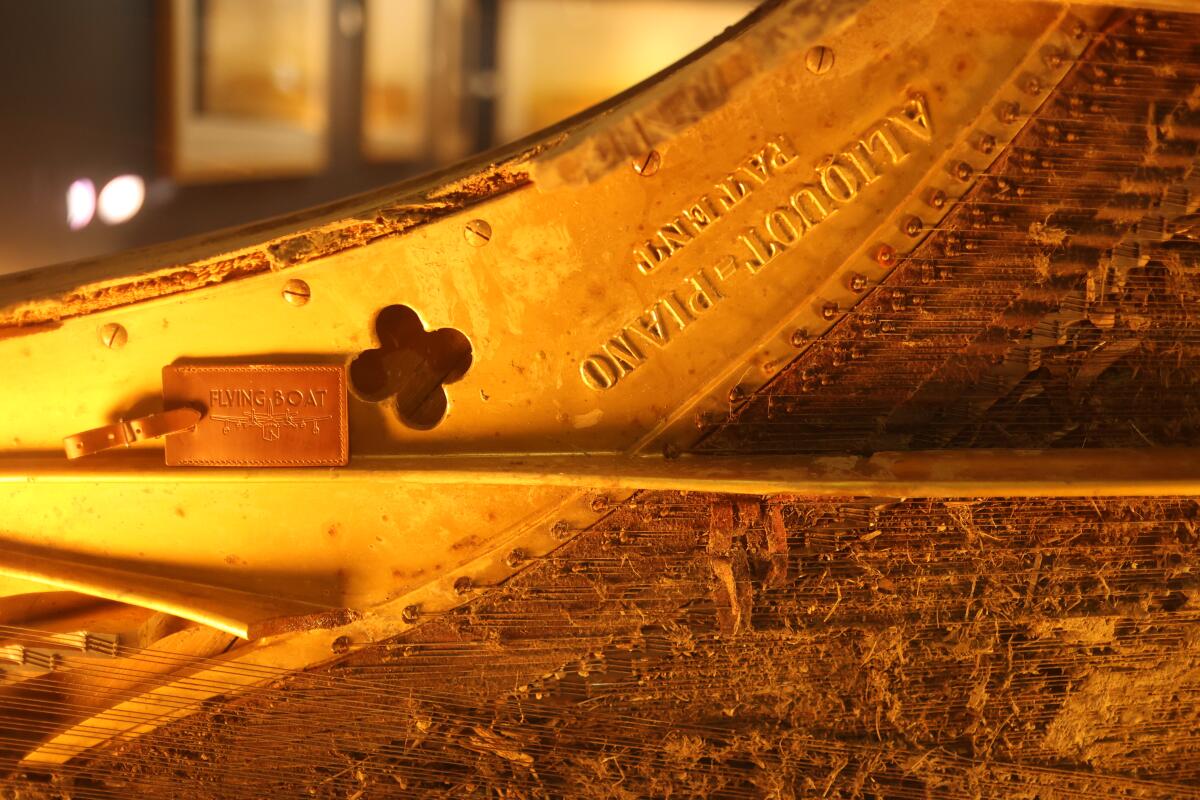It was pouring rain when Kyril Kasimoff unfolded the pages of his just-delivered newspaper. Almost immediately, his heart sank.
There, among the latest dispatches detailing the destructive and deadly deluges that walloped the Southland in early February, was a photograph of a storm-wrecked grand piano — caked in mud, upended by Mother Nature’s fury.
“I kept shaking my head staring at it,” he said of the image on the front page of the Feb. 6 edition of the Los Angeles Times. “What a tragedy.”
The persistent and pouring rain had triggered a mudslide in the Beverly Crest neighborhood of Los Angeles, pushing the piano’s home off its foundation and sending it sliding down a hill. The piano fell out a window, bounced off a carport and landed upside down.
A grand piano lies upside down after a Beverly Crest home was pushed off its foundation by a mudslide on Feb. 5.
(Allen J. Schaben / Los Angeles Times)
Kasimoff, 64, couldn’t stop looking at the image. He inspected the picture, scrutinizing the piano’s wooden legs, its muddied pedals, its frame.
“That’s a Blüthner,” he said to himself.
That’s when he knew he had to save it.
Kasimoff’s entire life has revolved around pianos, their music and their history. And Blüthners have been at the epicenter.
His father, William Kasimoff, was a clarinet player who opened a piano shop in Pasadena with his wife, Helga.
The two imported their first Blüthner piano from Leipzig, Germany, in 1963, making them the oldest Blüthner representatives in the U.S. They’ve been a staple on the Southern California music scene, providing instruments and services to musicians and artists for decades.
But Blüthner pianos, first built in 1853, were the driver of their world.
Kyril Kasimoff shuddered at the thought of the Beverly Crest Blüthner being hauled away like so much debris, as if its elegant frame was just another piece of soddened, shattered wood.
It was clear its sound would never be true again — even hundreds of hours of work and thousands of dollars couldn’t turn back that clock. But Kasimoff was intent on securing it a second life.

Kyril Kasimoff, bottom, and Dirk Braun pose with the storm-battered, 149-year-old Blüthner piano that was recovered from a mudslide and is now on display at Braun’s art gallery in Malibu.
(Michael Blackshire/Los Angeles Times)
“These pianos are treasures, and I couldn’t see it just thrown away,” Kasimoff said.
With the help of a neighbor, Kasimoff got in touch with the piano’s owner and arranged to put it on display. He’s since partnered with Dirk Braun, owner of an art gallery in Malibu, to display the muddied and battered instrument there.
In doing so, they said, they hope the piano’s story might continue.
“It’s survived all this time,” Braun said. “Its final fate is not going to be that it was ejected from this house and salvaged. It’s an irreplaceable work of art.”
Until April, the piano that the two men have dubbed “Storm Blüthner” will be on display at the Dirk Braun Gallery. It sits now on its side, filled with hardened dry mud.
“There’s no need to clean it; it is what it is,” Braun said. “It has its own beauty from what it went through, and it’s still there.”

The keys and strings of the antique piano were intact, but the instrument is no longer playable, and will never be again.
(Michael Blackshire/Los Angeles Times)
Despite being violently ejected from a sliding home, the instrument remained surprisingly intact, Braun said. All the ivory keys remain in place, and none of the strings were broken.
After taking the piano, Kasimoff was able to confirm it had been built in 1875. He and Braun are still working to learn more about its history, but have already confirmed the instrument once belonged to Miliza Korjus, a Polish Estonian opera singer who was nominated for an Academy Award for her role in the 1938 film “The Great Waltz.”
“It’s had such an interesting and exciting life,” Braun said. “This piano was around since before Hollywood was invented.”
Kasimoff’s mother, Helga, still helps run the family piano shop, which has since relocated to Los Angeles. She said she imagines Storm Blüthner in the middle of social gatherings, surrounded by musicians and celebrities singing.
That, she said, was what Blüthner pianos were crafted for.
“Some people think it’s mystical, but it is the best instrument to accompany other instruments, including the voice,” she said. “It never competes. It never wants to be louder. It’s always supportive.”

Gallery owner Dirk Braud, left, and piano enthusiast Kyril Kasimoff hold pieces of “Storm Blüthner,” the piano rescued from a Beverly Crest mudslide.
(Michael Blackshire/Los Angeles Times)
Now the piano’s melodic days are over. But Braun, a 37-year-old photographer and filmmaker, notes there’s beauty even in the wreckage.
Being tossed out a window and covered in debris is now as much a part of its history as the glitz and glamour of long-ago gatherings.
“How it stands right now, it’s an irreplaceable piece of art,” Braun said. “In a way, it seems like it’s a symbol of death but, if it has another chance, it has the chance of a rebirth and a new life.”
He is currently working on a film about the piano.
What will become of it after April is unknown, they said. They’re sill exploring options, including possibly lending it to the L.A. Opera to display.
At 94, Helga Kasimoff is still eager to share a bit of history about pianos, her husband and their shop. She’s excited to see Storm Blüthner get another chance.
When she first saw its picture, she was sure the piano had been damaged beyond use. She remembered a phone conversation she had in 1964 with Rudolf Blüthner-Haessler, who headed the company at the time.
She’d come across one of the first 100 Blüthner pianos ever built, but it had been abandoned and damaged to the point that squirrels were nesting on its strings. She wondered, could it still have value?
“I’ll never forget his answer,” she said. “He said, ‘My dear, this piano — put it to rest. It has done its duty.’”

The inside of the 149-year-old piano at Dirk Braun Gallery in Malibu.
(Michael Blackshire/Los Angeles Times)
She paused.
“I think this piano has done its duty, but now continues in its present condition to fulfill its duty,” she said. “Everything comes to an end. But sometimes, something reminds us of what it had done, what it had been, and the past. It served a great singer, and it probably has made many people happy.”
This story originally appeared on LA Times

